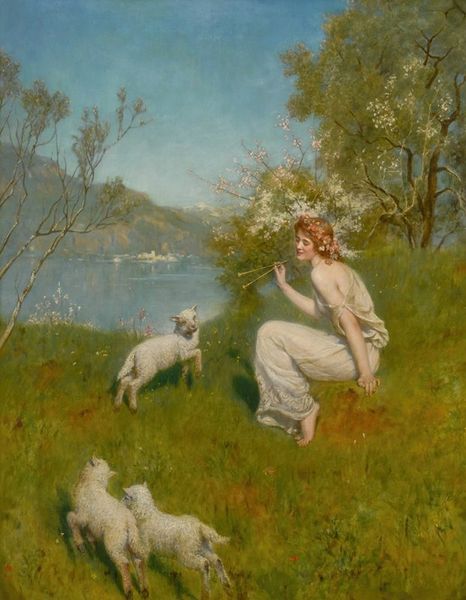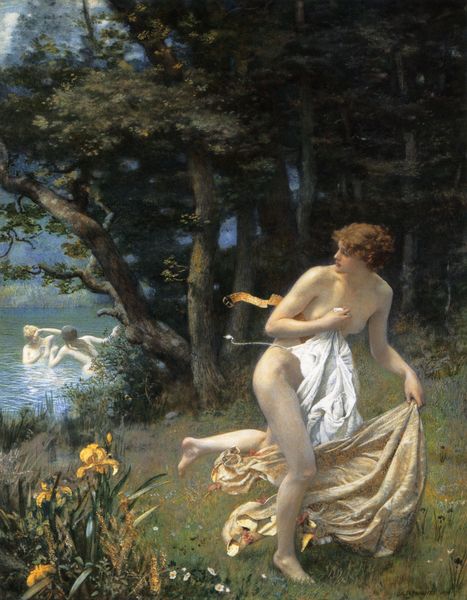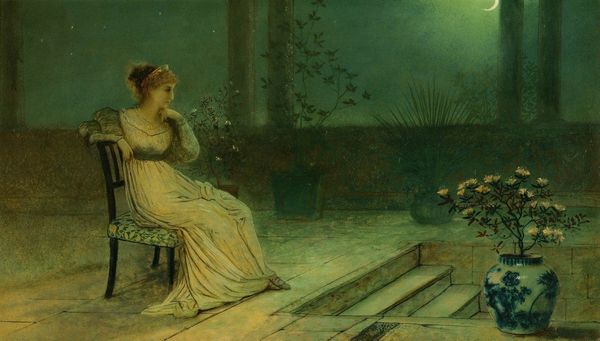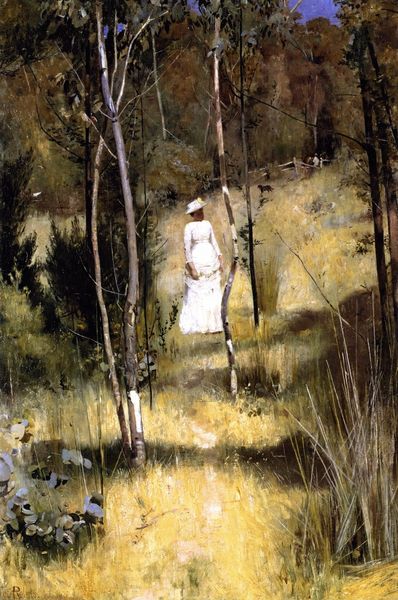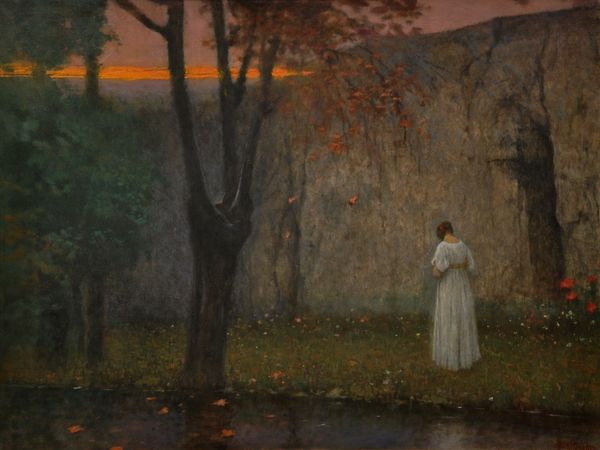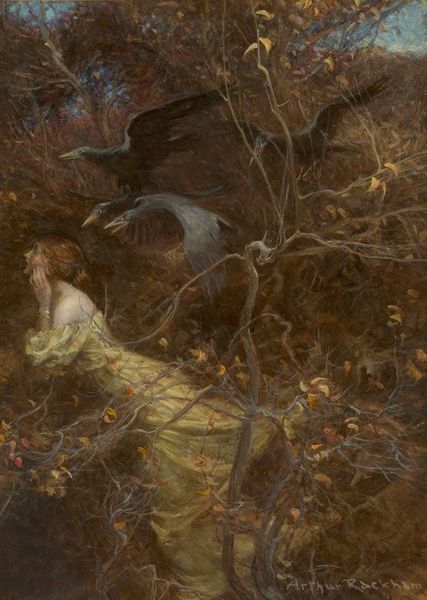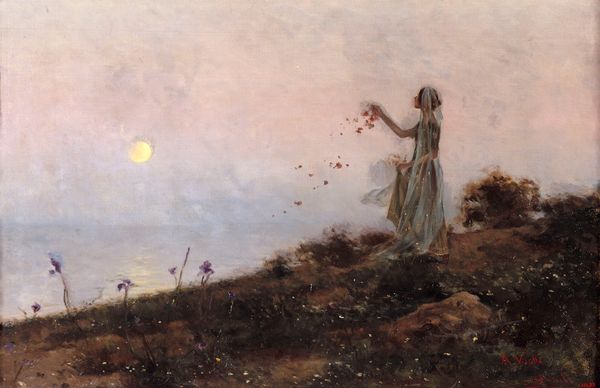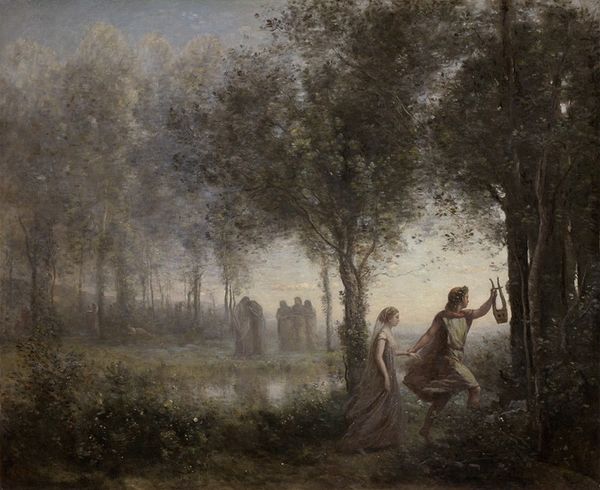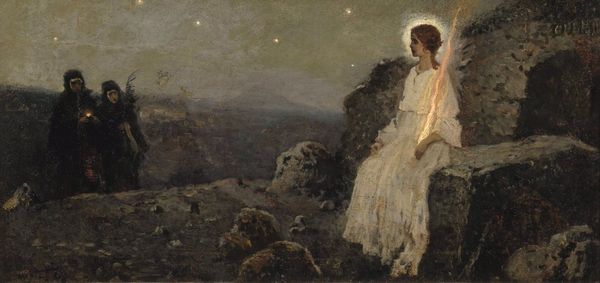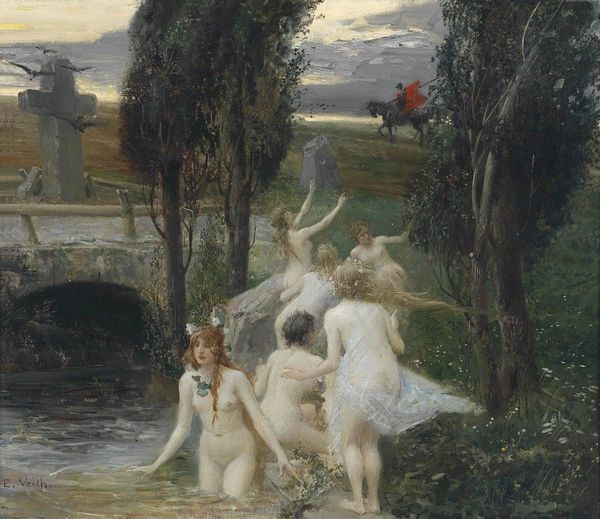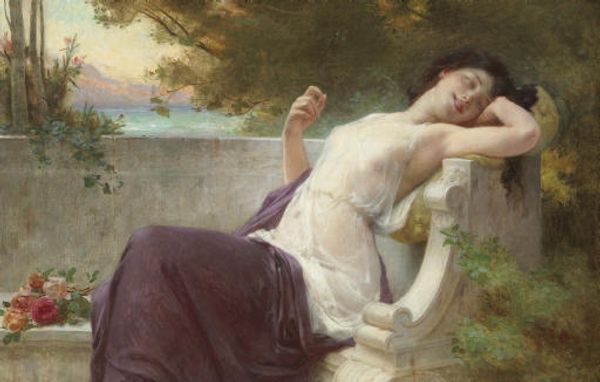
Copyright: Public domain
Editor: This is "Scene from Roman Life," painted by Henryk Siemiradzki in 1883, using oil paints. There's a beautiful, wistful feeling about it, almost like a memory. I'm drawn to the figure of the woman and the texture of the rocks, they're almost calling me in. What catches your eye about this painting? Curator: The material choices themselves are quite telling, aren't they? Oil paint allows for a luminosity, an almost theatrical light. Think about the cost of pigments in the 19th century and the kind of patron who would commission or purchase a work of this scale and detail. This isn’t just about depicting a Roman scene, it’s about projecting a certain status, a cultivated understanding of the past consumed for enjoyment. What do you see in the actual brushstrokes and the labor involved? Editor: I hadn't thought about it like that. There's an incredible amount of detail, especially in the clothing and the foliage. It seems meticulously rendered, which would have taken a significant amount of time and skill. Does that speak to the art world’s expectations back then? Curator: Precisely. Consider the pre-photographic era: such paintings fulfilled a desire for representational clarity alongside dramatic narratives. Think of the labour divisions: From grinding pigments, preparing the canvas to layering glazes. How might the social conditions surrounding Siemiradzki have shaped the painting’s romanticized depiction of Roman life? And, given its title "Scene from Roman Life," whose life is really being represented here? Editor: Right, because the average person in Roman times definitely wouldn’t have had this experience. It makes me wonder about who could afford to see themselves in this idyllic scene back then and, honestly, who can now. I suppose looking at it from a material perspective makes that privilege more stark. Curator: Indeed. By understanding the processes and materials involved, we reveal a complex intersection of class, taste, and historical narrative embedded within what initially appears to be a simple romantic painting. Editor: I see the painting in a completely different light now, no pun intended! Thanks for your perspective. Curator: Likewise. It’s by examining those embedded processes that we see beyond the surface, towards a more grounded understanding of art.
Comments
No comments
Be the first to comment and join the conversation on the ultimate creative platform.

